
LONICERA PERICLYMENUM GRAHAM THOMAS AGM Stock Photo Alamy
S T U V W X Y Z Or use Plant Finder LONICERA periclymenum 'Graham Thomas' smartphone 'L' > LONICERA > periclymenum > 'Graham Thomas' > LONICERA periclymenum 'Graham Thomas' Commonly known as Common honeysuckle, Woodbine CLIMBING HONEYSUCKLES Clear creamy yellow, heavily scented Further Reading..

Lonicera periclymenum Graham Thomas Express Garden Shop
Lonicera periclymenum 'Graham Thomas' AGM - The ivory and gold flowers of this honeysuckle fill the air with scent on summer nights and attract hummingbirds and moths; then in fall, glossy red berries provide food for birds.. This reliable deciduous climber will weave its way through the metal lattice of an archway in well-drained, moist soil in semi-shade.
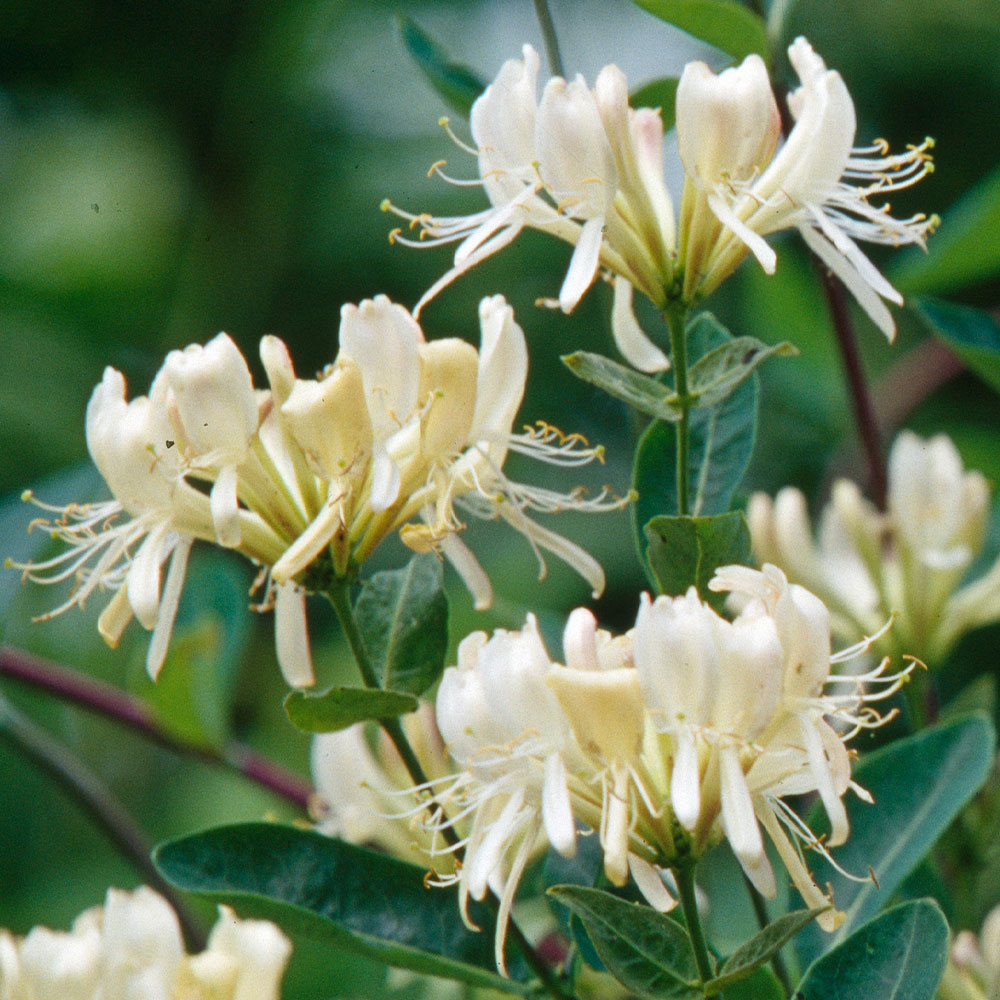
Lonicera periclymenum Graham Thomas Express Garden Shop
Lonicera periclymenum (wild honeysuckle, common honeysuckle or woodbine) is native to the UK. Climbing honeysuckles flower in summer, in shades of white, cream, lemon yellow, pink, orange and raspberry red. They're perfect plants for an informal look or a cottage garden and look good combined with roses for a romantic look.

LONICERA PERICLYMENUM GRAHAM THOMAS Cotswold Garden Flowers
Climber Wall Shrub Lonicera periclymenum 'Graham Thomas' honeysuckle 'Graham Thomas' A large twining deciduous climber with oval, dark green leaves whitish beneath and terminal clusters of fragrant white flowers which soon turn to buff-yellow. Berries red. Long flowering season Synonyms Lonicera 'Graham Thomas' Join the RHS today and save 25%

Lonicera periclymenum 'Graham Thomas’ honeysuckle vine Plant & Flower Stock Photography
Scientific name: Lonicera periclymenum 'Graham Thomas' Description As a native of Asia, there are a number of different cultivars of Woodbine Honeysuckle. The cultivar 'Graham Thomas' has white to light yellow flowers. Morphology: This is a deciduous twining vine that can grow 10'-20' with medium texture and a fast growth rate.

Photo 10566 Lonicera periclymenum 'Graham Thomas' plant lust
Lonicera periclymenum 'Graham Thomas' Lonicera periclymenum 'Graham Thomas' (Honeysuckle 'Graham Thomas') Other names: Lonicera 'Graham Thomas' ShootChecker™ STOP: Make sure you get the "Right Plant, Right Place." 90% of plants die because they were the wrong plant choice.

Lonicera periclymenum 'Graham Thomas' Photograph by Science Photo Library Fine Art America
Honeysuckle 'Graham Thomas' Lonicera periclymenum Late Dutch Honeysuckle FROM £29.99 100% (2 Reviews) Garden Club Members Price: FROM £26.99 JOIN TODAY A well known cultivar Deliciously fragrant, large white, tubular flowers Ideal for scaling walls, fences, pillars and pergolas Red berries are loved by birds
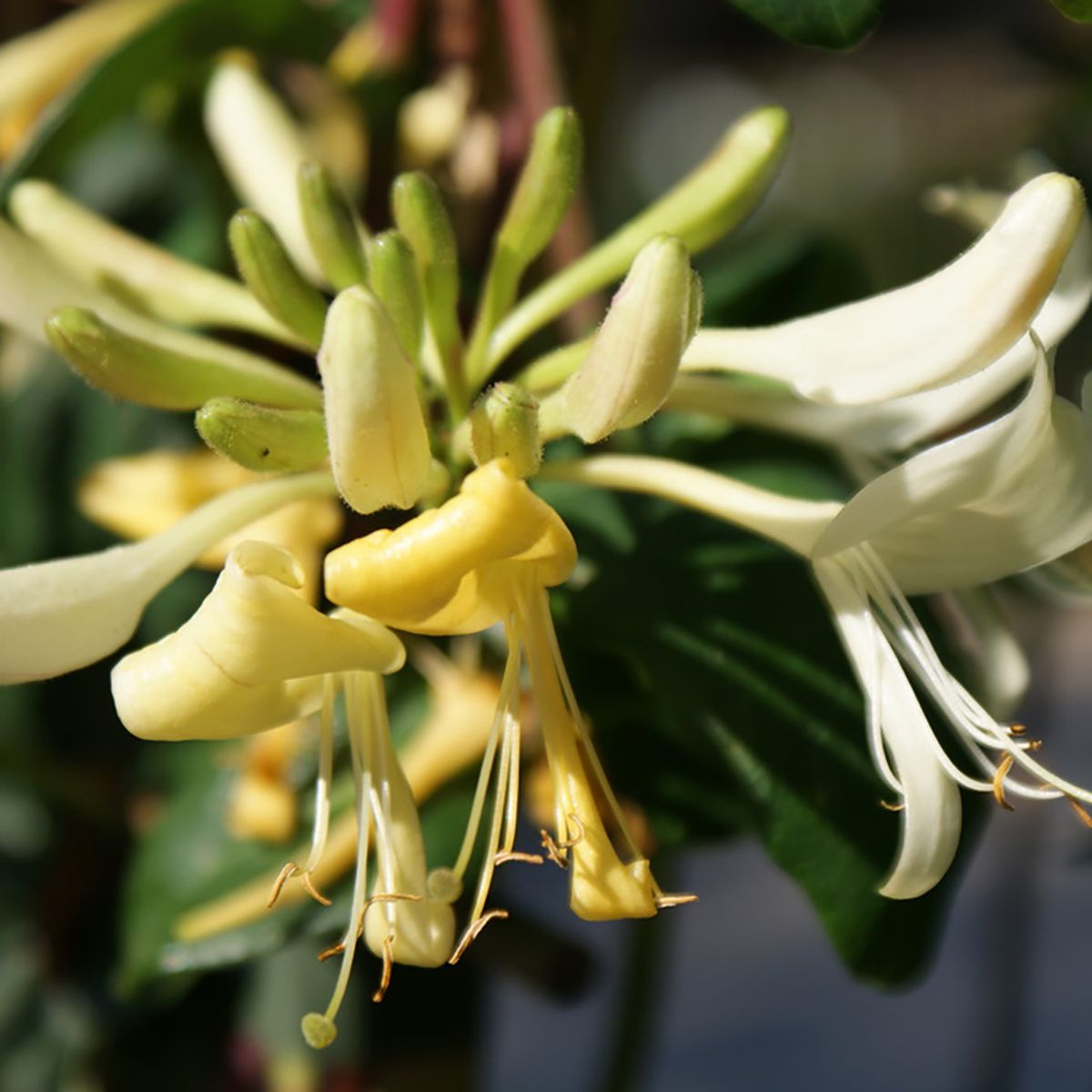
Lonicera periclymenum Graham Thomas Premium Quality Climbers thorncroftclematis.co.uk
European honeysuckle 'Graham Thomas' (Lonicera periclymenum 'Graham Thomas') Care Guide. European honeysuckle 'Graham Thomas' is an evergreen deciduous shrub that blooms with fragrant white tubular flowers that become pale yellow as they mature. It is a cultivar of European honeysuckle and is named in remembrance of Graham Thomas, an esteemed horticulturist and author of many gardening books.
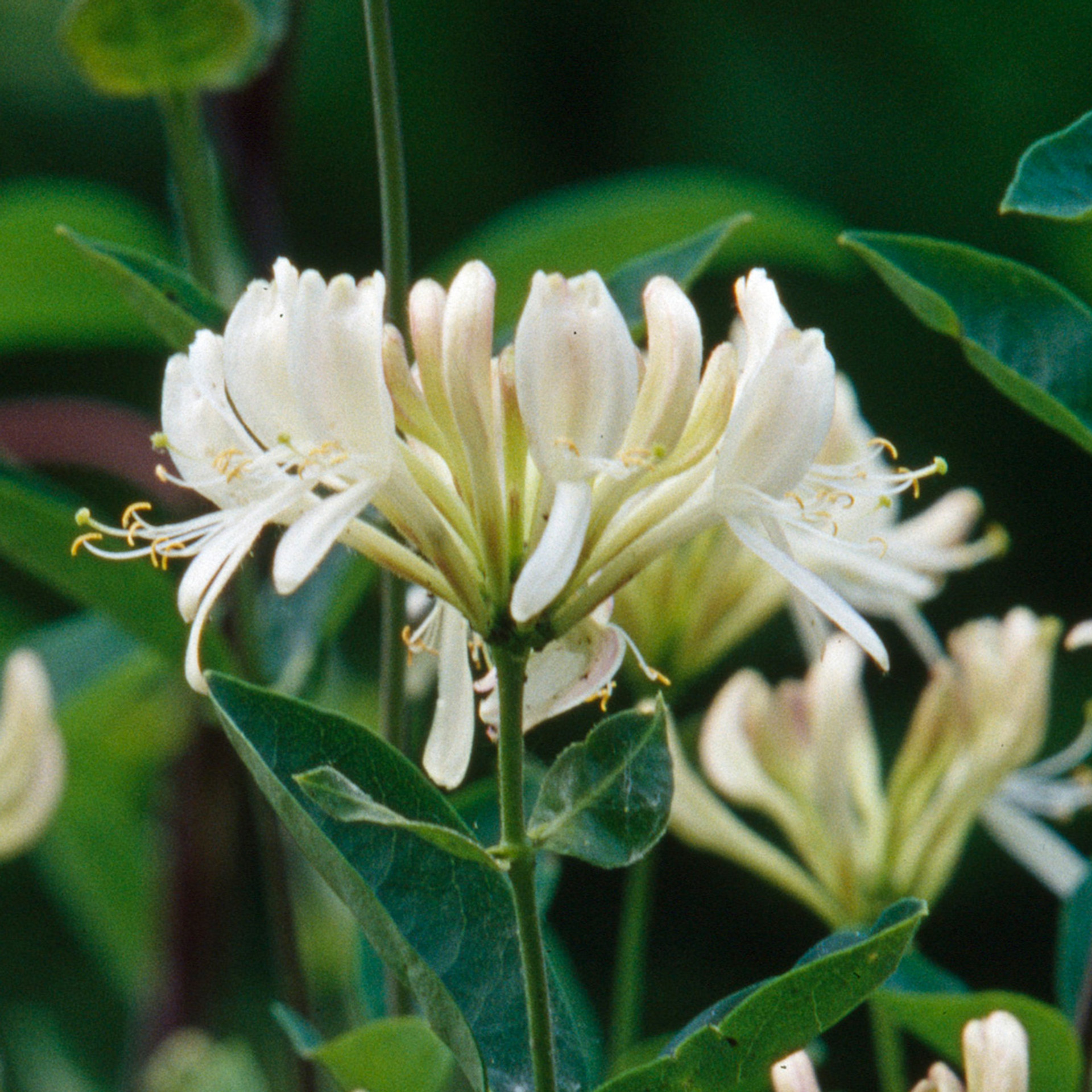
Buy premiumquality Lonicera periclymenum 'Graham Thomas' from Dutch Bulbs
Lonicera, Honeysuckle, Late Dutch Honeysuckle, Woodbine 'Graham Thomas' Lonicera periclymenum. Upload Image Print Version View Gallery 4 photos. Upload Image Print Version Family Caprifoliaceae (cap-ree-foh. After concerns during 2017 summer as to finding a 'true' Graham Thomas honeysuckle vine,.
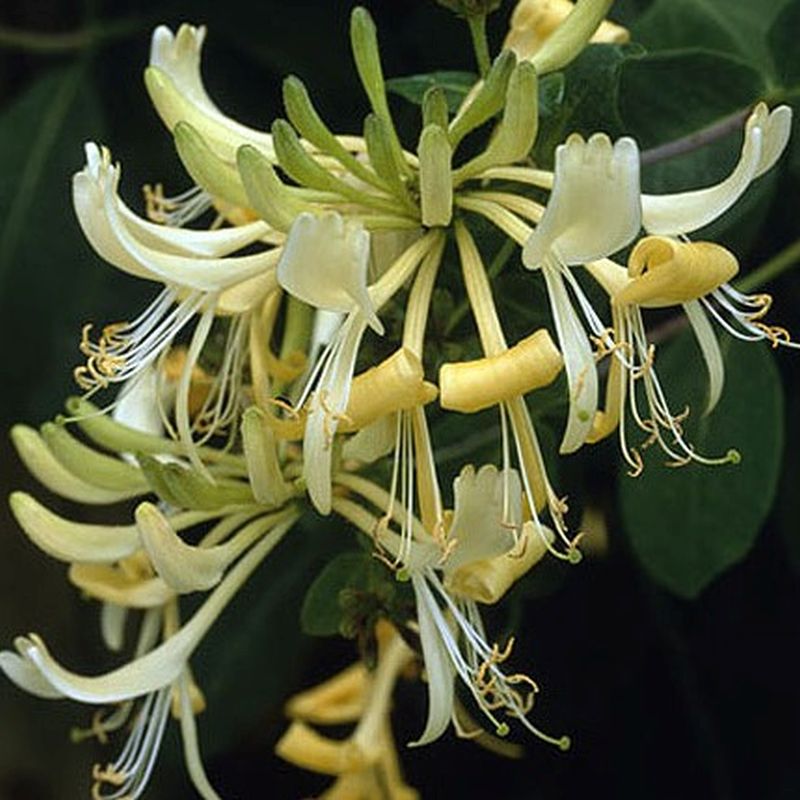
Lonicera periclymenum 'Graham Thomas' (Trellis) 20L Coolings Garden Centre
Characteristics Cultivar: Graham Thomas Family: Caprifoliaceae Size: Height: 0 ft. to 20 ft. Width: 0 ft. to 0 ft. Plant Category: climbers, Plant Characteristics: decorative berries or fruit, low maintenance, Foliage Characteristics: deciduous, Flower Characteristics: fragrant, old fashioned/heritage, showy, Flower Color: whites, yellows,

Lonicera periclymenum 'Graham Thomas'
Lonicera periclymenum Graham Thomas is offered in a 3/4 gallon size with free shipping! Dutch Honeysuckle. Can be partly to fully evergreen in warmer climates. European Native.Size: 3/4 GallonShipping: Free!Hardiness Zones: 5-9Height: 15-25 fe.

Lonicera periclymenum &Graham Thomas& honeysuckle &Graham Thomas& Climber Wall Shrub/RHS Gardening
The L. periclymenum species are some of the most aromatic honeysuckles one can obtain as this is your common honeysuckle vine most frequently seen rambling through trees, bushes and fence lines. With so many varieties, 'Graham Thomas' impressed me the most by receiving the 1993 Royal Horticultural Society's Award of Garden Merit!
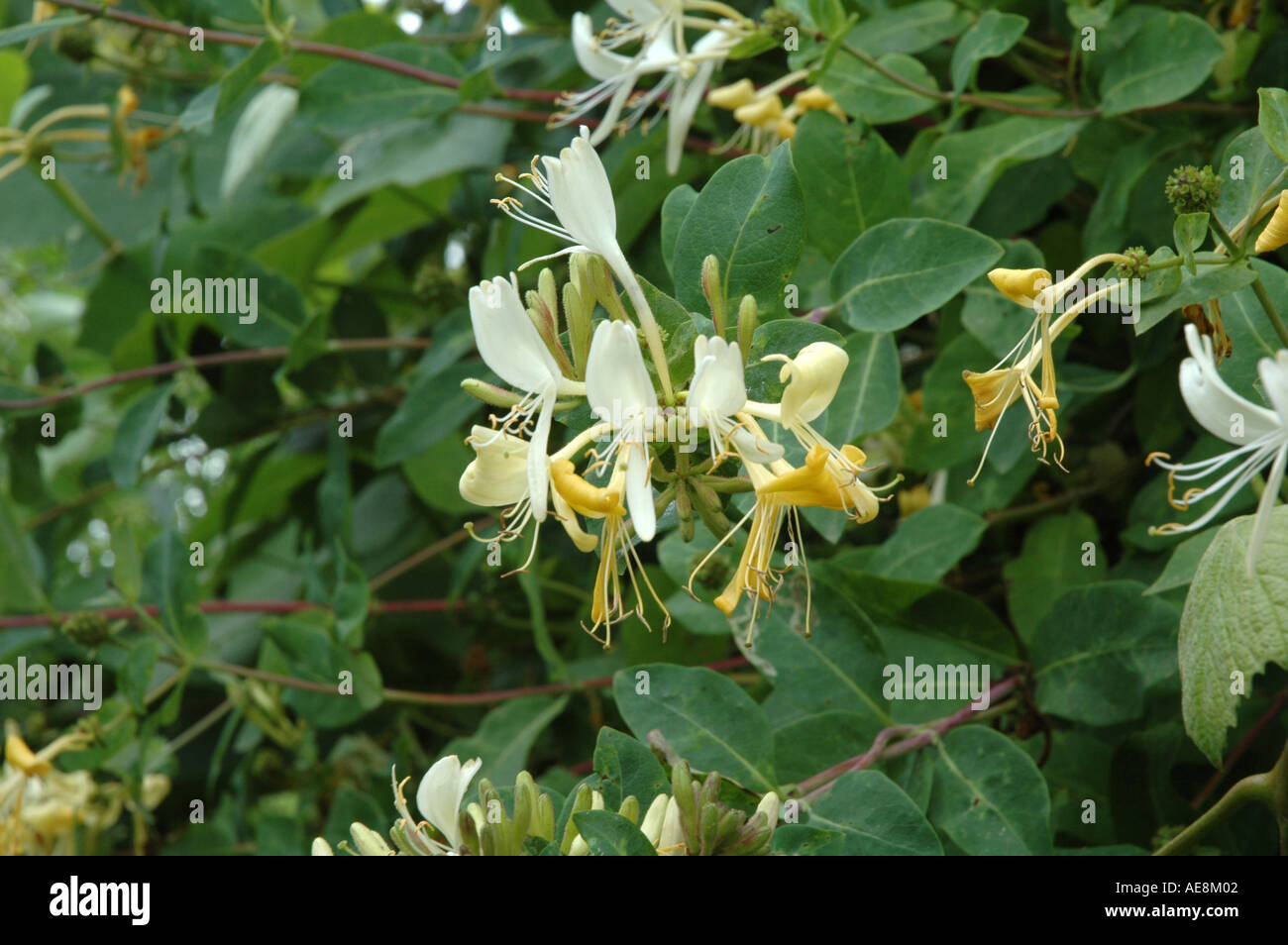
Lonicera periclymenum Graham Thomas Honeysuckle Stock Photo Alamy
Lonicera periclymenum, common names honeysuckle, common honeysuckle, European honeysuckle, or woodbine, is a species of flowering plant in the family Caprifoliaceae native to much of Europe, North Africa, Turkey and the Caucasus. [2] It is found as far north as southern Norway, Sweden and Finland. Description
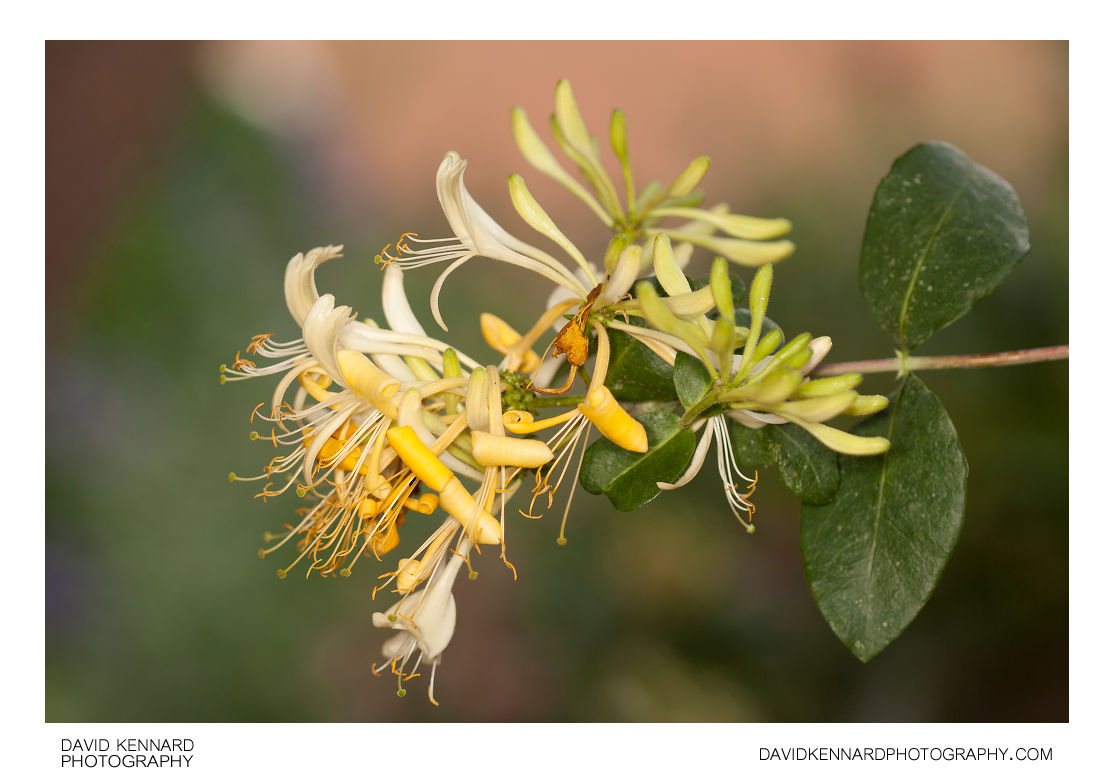
Lonicera periclymenum 'Graham Thomas' (II) · David Kennard Photography
Lonicera periclymenum 'Graham Thomas' Standaard (incl) Lonicera periclymenum 'Graham Thomas' Lonicera, This floriferous forest honeysuckle is creamy white discolouring to buff yellow. It has a long flowering period and red berries appear in the fall. Colour.

Buy Lonicera periclymenum 'Graham Thomas' Honeysuckle Sarah Raven
Common Name: Honeysuckle Genus: Lonicera Species: periclymenum Cultivar: 'Graham Thomas' Skill Level: Beginner Exposure: Full sun, Partial shade Hardiness: Hardy Soil type: Well-drained/light.
.JPG?timestamp=20220815021023)
Lonicera periclymenum Graham Thomas Popínavé dřeviny Zahradnictví Franc
Lonicera periclymenum 'Graham Thomas'. Honeysuckles (Lonicera) are mostly hardy twining climbers, often grown for their fragrant display of summer flowers. Most are deciduous but some are evergreen. They are frequently grown for their ability to cover unsightly walls and outbuildings. The hardy climbing types need their roots in shade, and.